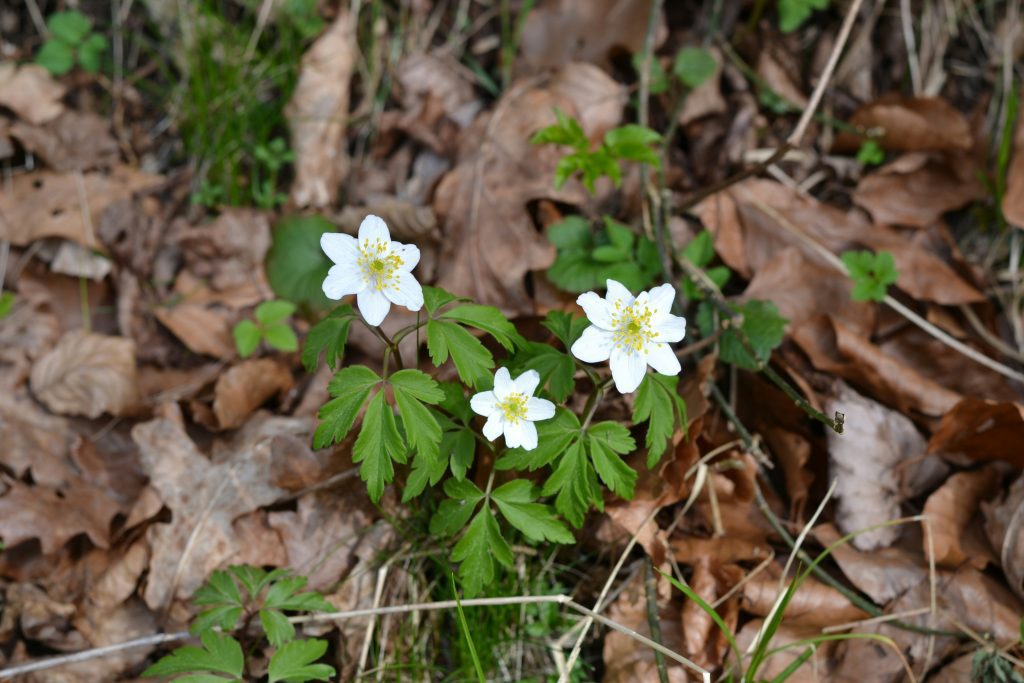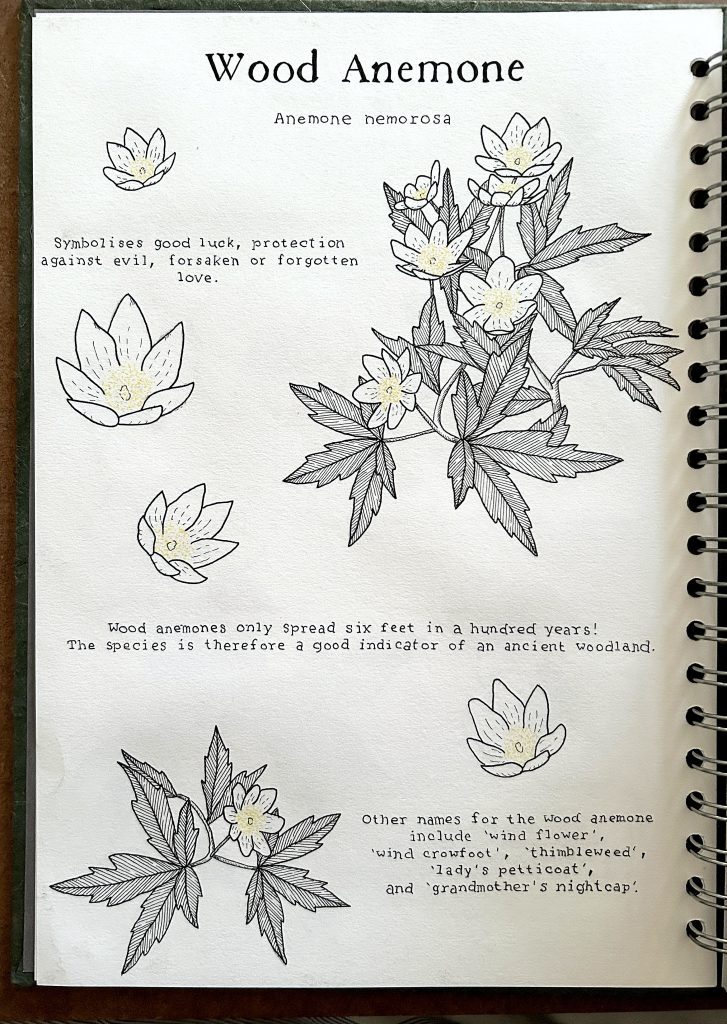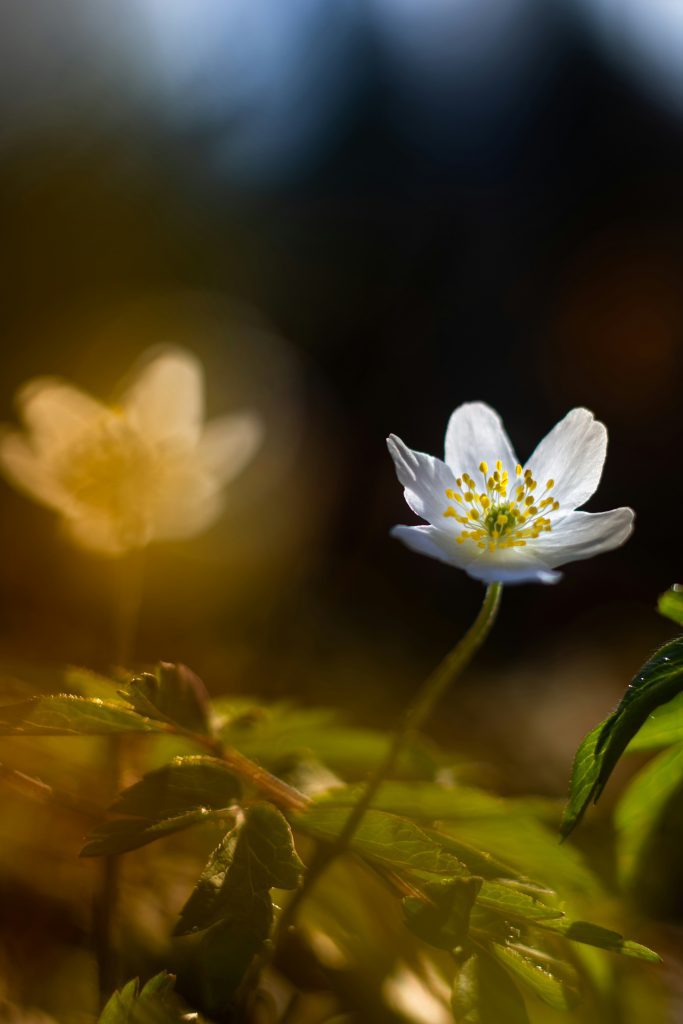Your basket is currently empty!
The Wood Anemone
Wood Anemones are a woodland wildflower that is of ecological importance as bees and hoverflies find it a useful early nectar source. Usually growing no taller than about six inches, with large white, or sometimes pink-purple streaked petals, which are actually sepals.

The Wood Anemone tends to bloom around March and April, sometimes May, while the trees are still letting in enough light. They open up in the sunlight and close up at night or when it is overcast which has lead to the folklore that a closed Wood Anemone is a sign of coming rain.
They are an indicator of ancient woodland as they only spread around six feet in a hundred years due to their seeds being largely infertile and having to rely on their roots slowly spreading.

Ancient woodlands are such an important habitat, supporting the lives of thousands of species and should be protected. We can’t just plant new ancient woodlands, new trees and new habitats are wonderful but they don’t provide what ancient woodlands do, a topic I’m sure I’ll write about more!
Wood Anemones are toxic to humans and some animals, they should be left alone and just be enjoyed for how pretty they look.

They are the county flower of Middlesex and they are said to symbolise good luck, protection against evil, and forsaken or forgotten love.
Romans would pick the first Wood Anemones that appeared as they believed them to be lucky and that they would ward off a fever.

Other names for Wood Anemones are: Windflower, Wind Crowfoot, Wooden Bettys, Thimbleweed, Lady’s Petticoat, Grandmother’s Nightcap, Smell Foxes (due to their sharp, musky smell), Wooden enemies (from children mis-hearing the words), Moggie Nightgown (In some parts of Derbyshire moggie can be a word for mouse), Lady’s Nightcap, Old Woman’s Nest, Nightcaps, Grove Anemone, and Moonflower. I’m sure there are many more from regional variations too.
I’ll be adding more to this post as and when I find any interesting little bits of information or when I think of something I’d like to add.
